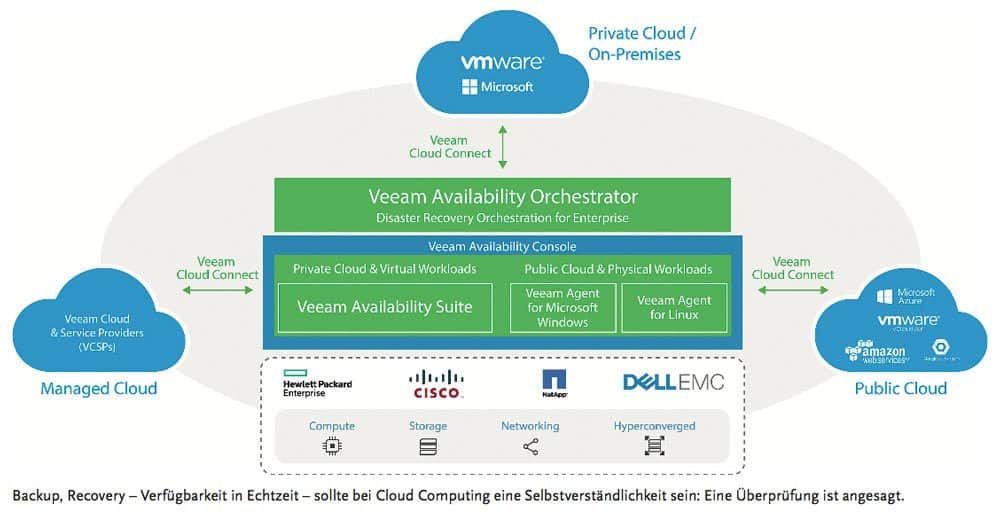Backup and Recovery - The Race To Zero


Digital transformation promises new times in which a modern, successful company is accessible around the clock. New technologies ensure greater efficiency and smooth business processes.
They also open up the opportunity for completely new business models. Without digital transformation, companies will not be successful today or in the future, according to widespread opinion.
But many companies are not prepared for this and their IT departments are facing major challenges. The computer failure at British Airways or even the worldwide impact of the WannaCry ransomware attack show how vulnerable our global economy already is.
Revenue losses and image damage quickly reach double- to triple-digit millions. In a recent survey of IT executives in 24 countries, 66 percent of them felt that unplanned IT outages due to hacker attacks, infrastructure and network failures, and natural disasters hampered their digitization initiatives and innovation.
These IT failures cost companies an average of over 20 million euros per year. 77 percent of German IT managers consider their data backup processes to be inadequate.
Availability and protection of applications and data are two essential criteria by which the reliability and performance of IT teams are measured today.
How backup and recovery become more powerful
 The more organizations rely on digital processes in their day-to-day business, the more painful gaps in availability and data security become: business-critical processes are quickly impaired and economic success suffers.
The more organizations rely on digital processes in their day-to-day business, the more painful gaps in availability and data security become: business-critical processes are quickly impaired and economic success suffers.
Availability and data protection have therefore never been more important than they are today. At the same time, IT departments are also facing their biggest tasks: Business-critical applications are increasingly operated in virtualized infrastructures, and entire landscapes of virtual machines are emerging.
Organizations are dealing with huge volumes of data that are growing exponentially. Business applications are increasingly delivering multimedia data, such as photos or videos, and so the storage requirements in data centers are increasing dramatically.
This brings the performance of backup and recovery procedures into focus, and many companies are finding that their traditional tools are no longer up to the task. The more business-critical applications need to be constantly accessible, the smaller the backup windows become.
At the same time, complexity and costs are increasing, as are expectations for ever-shorter recovery service level objectives (SLOs) in the minute range, for all applications and data.
Eighty-two percent of IT executives see an availability gap between users' expectations for unfettered access to data and applications and the services their departments can currently deliver.
 Five key backup issues
Five key backup issues
This availability gap is primarily caused by backup issues that are found in almost every organization, such as:
-
Backup "Wild Growth":
To keep up with the demands, more and more virtual machines, workloads and storage are finding their way into IT infrastructures. Nevertheless, the existing backup time window must be adhered to, and so the backup infrastructure must also be expanded. As a consequence, the need for personnel to keep all backup processes and storage under control is increasing.
-
Backup "overflow":
If the backup solution cannot complete the backup in the designated time window overnight, the job continues the following day. As a result, overall system performance drops and some applications are temporarily unavailable. If necessary, the IT team has to cancel the backup job, and the backup remains incomplete.
-
Unreliable backup and recovery:
IT administrators face a variety of complex tasks, from managing virtual machines to snapshots to backup agents and schedules, not to mention unforeseen glitches that lead to job abandonment.
The risk is that backups and, as a consequence, restores of data are incomplete or incorrect, which can lead to even more data loss and downtime.
-
Inefficient tools and processes:
Many data centers still use traditional backup software for physical environments. The result is inefficient processes, higher costs, unnecessary complexity, and the inability to easily integrate backups into virtual infrastructure management platforms.
-
Bottlenecks in budget and personnel:
IT departments are expected to improve IT performance, agility, security, and other business-critical functions, and to implement digital concepts. Backup and recovery are important tasks, but they do not contribute to revenue or innovation.
Many IT departments need to strengthen availability, security and data protection on the one hand, while at the same time struggling with a shortage of skilled staff and budgets.
To close the availability gap, organizations will need to invest extensively in their backup processes and data protection in the coming years. According to an IDC forecast, spending on data backup and recovery software will increase by an average of 5.6 percent annually through 2020.
Over the same period, however, total IT spending will grow by just 2.9 percent. These forecasts indicate that IT organizations will have to divert budget from other areas in order to meet stricter SLA requirements by investing more in data protection solutions.
Nevertheless, achieving the ideal state, i.e. 100 percent availability without data loss - IDC calls this "The Race To Zero" - is technically feasible, but involves very high costs and therefore only makes sense for absolutely critical applications.
 Trend towards the multi-cloud
Trend towards the multi-cloud
IT teams are eager to invest in new applications and infrastructure to support digital transformation. In this context, the following applies: Every modernization of an IT production environment also requires corresponding improvements to the protection environment, otherwise IT failures are the inevitable consequence.
Large enterprises in particular are increasingly relying on cloud technologies for flexible support of business-critical processes. The trend here is towards "multi-cloud": depending on the requirements profile, private, managed or public clouds are used and, consequently, the requirements for protecting corporate data, restoring it and guaranteeing its availability are also changing.
Therefore, not only business applications should move to the cloud, but cloud services such as Backup-as-a-Service (BaaS) and Disaster-Recovery as-a-Service (DRaaS) are also becoming increasingly attractive for their protection and availability.
With the support of service providers and cloud technologies, new business requirements can be implemented faster and more flexibly. The same applies to data protection and application availability, as organizations gain access to more computing power, selected applications, more bandwidth or more storage capacity on demand and economically.
More and more companies are bringing service partners on board for individual areas, on the one hand to reduce costs and complexity, but on the other hand also to spread the burden of service level agreements (SLA) over several shoulders.
Cloud data must also be backed up
A typical example of a cloud application is Microsoft Office 365. According to the manufacturer, more than 100 million active subscribers now use the cloud software, over 70 million of them in companies.
The solution can be used immediately and without additional infrastructure in the own company. However, this does not absolve the user from the need to secure the data. With Office 365, the data is owned and controlled by the user company, which is accordingly also responsible for its protection.
Backup solutions should therefore reliably back up data from Office 365 to the company's own local IT environment and be able to quickly restore mailboxes as well as individual items if required.
More virtualization, more distributed infrastructures, more data and more cloud are leading to increasingly complex, hybrid IT infrastructures.
The future belongs to the platform
More than ever, however, companies need to ensure that all data is reliably backed up and quickly recoverable. Modern applications require modern data backup strategies.
This means that data protection solutions such as backups, snapshots, replication, and availability technologies should be implemented for each workload according to requirements.
Integrated into one platform, these data protection mechanisms can be centrally controlled and monitored. The Veeam Availability Platform for the Hybrid Cloud includes a variety of components that enable organizations to easily and cost-effectively organize and ensure the availability of virtual, physical and cloud-based workloads in a hybrid cloud environment.





